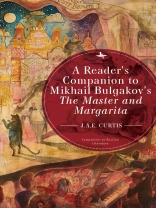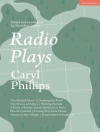Mikhail Bulgakov’s novel The Master and Margarita, set in Stalin’s Moscow, is an intriguing work with a complex structure, wonderful comic episodes and moments of great beauty. Readers are often left tantalized but uncertain how to understand its rich meanings. To what extent is it political? Or religious? And how should we interpret the Satanic Woland? This reader’s companion offers readers a biographical introduction, and analyses of the structure and the main themes of the novel. More curious readers will also enjoy the accounts of the novel’s writing and publication history, alongside analyses of the work’s astonishing linguistic complexity and a review of available English translations.
Spis treści
Table of Contents
Foreword
1. Bulgakov’s Life: Formative Years and First Successes—1891–1928
2. Bulgakov’s Life: Battling the Censor, and Writing The Master and Margarita—1929-1940
3. The Master and Margarita: Drafts and Final Version
4. Publication History of The Master and Margarita in Russian
5. A Tale of Two Cities: The Structure of The Master and Margarita
6. Woland: Good and Evil in The Master and Margarita
7. Pilate and Ieshua: Biblical Themes in The Master and Margarita
8. Political Satire in The Master and Margarita
9. Literature and the Writer in The Master and Margarita
10. “So who are you, then?”: Narrative voices in The Master and Margarita, Followed by a Stylistic Analysis of Extracts from the Text
11. English Translations of The Master and Margarita
Afterword—A Personal Reflection
Acknowledgements
Bibliography
Index
O autorze
J. A. E. Curtis has been exploring the life and works of Mikhail Bulgakov since the 1970s, when The Master and Margarita sensationally appeared for the first time. She teaches Russian Literature at the University of Oxford, and has also published research on Evgenii Zamiatin, and on 21st-century Russian drama.












